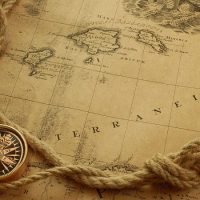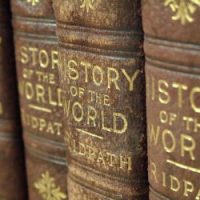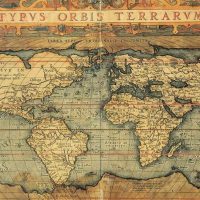Category: Essay Examples
Essay examples are of great value for students who want to complete their assignments timely and efficiently. If you are a student in the university, your first stop in the quest for research paper examples will be the campus library where you can get to view the sample essays of lecturers and other professionals in diverse fields plus those of fellow students who preceded you in the campus.
Browse Essay Examples:
Many college departments maintain libraries of previous student work, including essays, which current students can examine. This collection of free essay examples is our attempt to provide high quality samples of different types of essays on a variety of topics for your study and inspiration.
Justinian was born to a nonaristocratic family in the Balkans. His uncle Justin served in the imperial bodyguard and rose to become its commanding officer and then emperor from 518 to 527 c.e. Justin promoted and adopted his talented nephew and proclaimed him coemperor in 527. Two years …
The Kama Sutra (or Kama Shastra) is one of three ancient Indian texts written in the Sanskrit language that describe the permissable goals of life. It is devoted to the pursuit of karma, a legitimate goal but less exalted than the goal of artha (power), while the pursuit …
The greatest of the emperors of the Kushan Empire, which stretched through modern-day Afghanistan, Pakistan, and parts of northern India, Kanishka reigned for 20 years from about 127 c.e. During his reign the Kushan Empire reached its zenith as a major military power and also was to play …
One of the earliest political thinkers of ancient India, Kautilya (Chanakaya), the celebrated author of the Arthasastra, was prime minister of the emperor Chandragupta (r. 326–301 b.c.e.) of the Mauryan Empire (326–200 b.c.e.). According to some historians, he is dated around fourth century c.e., belonging to the Gupta …
Khosrow I, also known as Anushirvan, was the son and successor of Kavadh I and one of the most powerful kings of the Sassanid Empire. He led Persia into a glorious age after a long period of rebellion and civil wars. Although not the oldest son of Kavadh …
Kija is the Korean rendition of a semi legendary man named Qizi (Ch’i Tzu) in Chinese transliteration, who lived in the 12th century b.c.e. and played an important role in advancing civilization in Korea. The Korean peninsula is located in northeastern Asia, adjoining China. The ancestors of the …
The Kingdom of God is central to the message of Jesus (Christ) of Nazareth. The idea that God is king of the world is a concept that every ancient nation utilized for its propaganda purposes, and the Jewish people were no exception. However, the precise expression is not …
There were two main highways in ancient times between Mesopotamia, Egypt, and the lower Arabian Peninsula: the King’s Highway and the Way of the Sea. The King’s Highway largely skirted the desert and served desert peoples. It ran from Damascus to the Gulf of Aqabah, and from there …
The Kushite kingdom flourished in the northern part of present-day Sudan (called Nubia by the Romans) and southern Egypt. From their capital at Napata, the Kushites controlled the trade between Egypt and East Africa and developed into a major military power. Under the leadership of Piy, Kush forces …
The development and consolidation of the Han dynasty in China, particularly in terms of the expansion of population and agriculture, had an impact on the nomadic tribes along its northern border. In 135 b.c.e. the Han Chinese emperor sent his emissary Zhang Qian (Chang Ch’ien) to find the …
Confucianism and Daoism (Taoism) are the two most influential philosophies in China. Both had their roots during the later Zhou (Chou) dynasty in the era of the Hundred Schools of Philosophy. The political and social environment that inspired the Hundred Schools was the breakdown of the Zhou monarchy …
Late barbarians invaded present-day Europe, contributing politically, culturally, and militarily to the collapse of the Western Roman Empire by establishing their own kingdoms. The Huns, Alans, and Goths from the Asiatic steppes were the first wave of land invaders to make inroads into the waning Roman Empire in …
The Latin Church must be defined in relation to the Greek Church. The fact that the former came to mean Roman Catholic (as opposed to Greek Orthodox for the latter) was a function of the politics of the later part of the first millennium c.e. At first the …
Legalism in Chinese is called fajia (fa-chia), meaning “school of law.” It is not strictly a philosophy but a set of amoral and cynical rules aimed at total control and regimentation of society in the interest of a powerful state that is successful in war. It developed late …
Legionaries were the soldiers of the Roman Republic and Empire, who collectively formed groups of between 1,000 and 6,000 men called legions. Legionaries are widely regarded as some of the most efficient and effective military personnel of the ancient world. Legionaries achieved astonishing victories over the Greeks, the …
When news came to Sparta that the Persians were advancing for the second time in 10 years into the Greek heartland, only King Leonidas and his hand-picked band of 300 were dispatched to stop them. It was the feast of Carnea, and the Spartans were not inclined to …
Leo I, elected pope in 440 c.e., is one of two popes to have earned the epithet “great,” the other being Gregory the Great. Little is known of his early life. He first appears with certainty in the historical record as holding the important position of archdeacon under …
The preconditions for a society to have a library are a writing script, a level of literacy, schools that foster literary skills, an educated and resourceful educated class, an interest in reading, and a publishing industry. These conditions favored societies in the Near East and Greece in ancient …
The first Phoenician colonies were established on North African shores around 1000 b.c.e. The original people of North Africa, surviving to this day in the form of various Berber tribes, strongly defended their territory and freedoms from outside domination. The geography of North Africa made it easy to …
Linear B is the oldest known form of Greek writing extant today. It is a syllabic script that was used to represent Greek sounds. Adapted from Cretan Linear A, it was probably developed for a language other than Greek. The Minoans and Mycenae used Linear B in their …


